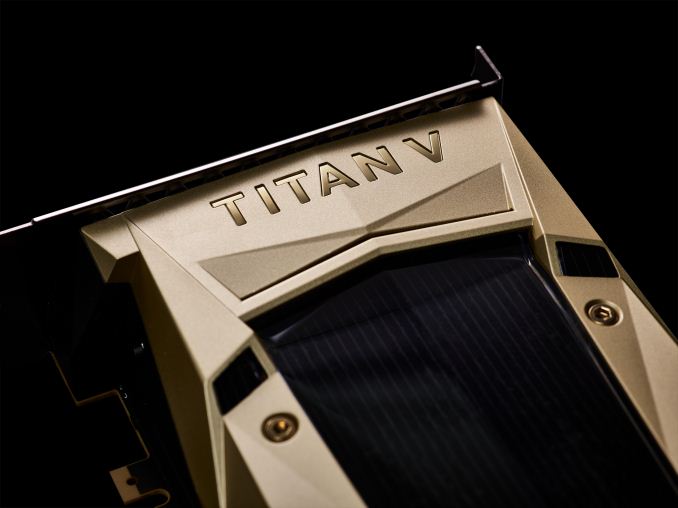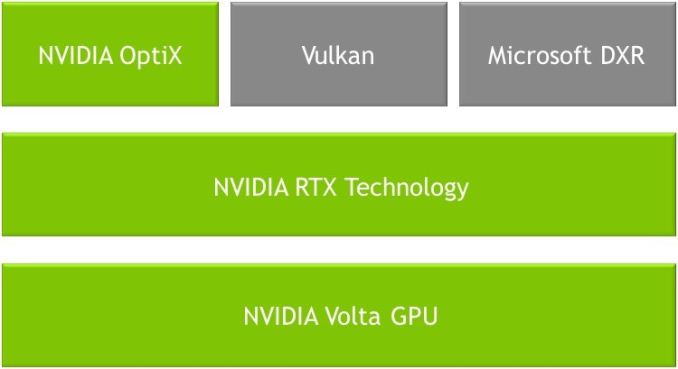The NVIDIA Titan V Deep Learning Deep Dive: It's All About The Tensor Cores
by Nate Oh on July 3, 2018 10:15 AM ESTFinal Words
As we bring this deep dive to close, I should state that DL performance benchmarking on GPUs is very much an ongoing project. For one, everything we've discussed today has been limited to image classification and CNNs, which is very standard as far as GPU deep learning goes, and very standard in its insight. It also plays to some of the traditional DL strengths of GPUs – and of tensor cores and library support for that matter – and in the end, the only featured end-to-end tests were the CIFAR10 implementations.
What we didn't cover was the plethora of failed benchmark runs from various other tests and suites. It proved impossible to find, in piecemeal or in whole, an up-to-date DL suite that ran modern workloads, provided end-to-end metrics, covered multiple ML domains, included tensor core and mixed precision support, and could be reasonably accessible and used by a non-developer.
Because tensor cores are such an important part of the Titan V, it is only natural that we utilize them in our tests. And as AnandTech is not a ML research organization, developing our own robust benchmarkable model in a given framework was not an option. Similarly, we are limited in directly modifying tests and models ourselves. Reworking scripts is one thing, but once you have to go peeling through random Python code of both the models and various supporting functions for whatever framework, the task becomes a little out of scope.
Meanwhile, DAWNBench and competition-type collections were ultimately designed for researchers and developers to create their own implementations, rather than providing a generalizable benchmark. Reference implementations as maintained by the DL frameworks still would need modification to show that it could be a valid benchmark. And if it isn't obvious already, re-configuring a model for Volta-compatible mixed precision is not something that can (usually) be done on the fly.
As a whole, this actually bears relevance to the Titan V. Tensor cores and mixed precision require not just explicit support: they need development. And while the performance boost is clearly evident in particular cases, it's not there in all cases. Even when you have code and datasets that mesh well with the tensor core execution model, at the end of the day neural network processing isn't bottlenecked solely by ALUs. So while the Titan V is capable of being much more powerful than past NVIDIA GPU designs – sometimes massively so – the kinds of performance gains that NVIDIA likes to promote are understandably some of the best-case results.
What this means for anyone thinking about purchasing the Titan V for compute needs is that investing a Titan V means investing in mixed precision DL models and/or WMMA-based GEMM acceleration for HPC (with the assistance of CUTLASS and such). Titan cards have always been prosumer, but the Titan V really makes its mark as a professional consumer card.
Meanwhile in the context of cuDNN/cuBLAS, as well as early mixed precision with DP4A and FP16x2, tensor cores are a natural evolution in attempting to hit a bullseye with programmable hardware for DL acceleration. Of which release notes of recent cuDNN versions list various issues with tensor core math and operations, so bugfixing is very much an ongoing process. Yet tensor cores are even more limited than 'deep learning matrix-matrix multiplications,' except all the details and implementations are not relevant to end-users.
But what about mainstream consumers? What does all of this tensor core development mean for them? Despite the focus here on neural networking, the tensor cores are expected to have some relevance and use in the consumer graphics space. We know that NVIDIA's recent-ish RTX ray tracing technology uses tensor cores to apply denoising on images to make up for limited number of rays. But at the same time, that type of a use case for tensor cores implicates a very different product than the Titan V. RTX hardware functionality will be opaque to end-users, much like a supposed near-future where FP16x2/Rapid Packed Math would be used in video games. And development of tensor core utilization needs to reach that point.
One other consumer-focused role that NVIDIA will be considering for any kind of mainstream parts is whether they want to include tensor cores for development debugging purposes. This is a similar route that NVIDIA already takes today with FP64 functionality, including a handful of FP64 CUDA cores in each GPU so that developers can run FP64 code natively, just very slowly. Right now the Titan V is the only game in town if you need to debug your tensor code on real hardware, but that can certainly (and arguably is likely to) change once mainstream GPUs get a chance to play catch-up.
Meanwhile, NVIDIA's traditional hardware development cadence and redacted Hot Chips talks point to a new consumer lineup in the near future, and it will be very interesting to see what architectural features turn up. What we can say is that the Titan V definitely has the marks of NVIDIA's future GPGPU aspirations. And the Titan V is not merely a deep learning accelerator, because the tensor cores are in essence not merely deep learning accelerators. Moving forward, we're hoping that MLPerf and similar efforts make good headway, so that we can tease out a bit more secrets from GPUs.












65 Comments
View All Comments
krazyfrog - Saturday, July 7, 2018 - link
I don't think so.https://www.anandtech.com/show/12170/nvidia-titan-...
mode_13h - Saturday, July 7, 2018 - link
Yeah, I mean why else do you think they built the DGX Station?https://www.nvidia.com/en-us/data-center/dgx-stati...
They claim "AI", but I'm sure it was just an excuse they told their investors.
keg504 - Tuesday, July 3, 2018 - link
"With Volta, there has little detail of anything other than GV100 exists..." (First page)What is this sentence supposed to be saying?
Nate Oh - Tuesday, July 3, 2018 - link
Apologies, was a brain fart :)I've reworked the sentence, but the gist is: GV100 is the only Volta silicon that we know of (outside of an upcoming Drive iGPU)
junky77 - Tuesday, July 3, 2018 - link
ThanksAny thoughts about Google TPUv2 in comparison?
mode_13h - Tuesday, July 3, 2018 - link
TPUv2 is only 45 TFLOPS/chip. They initially grabbed a lot of attention with a 180 TFLOPS figure, but that turned out to be per-board.I'm not sure if they said how many TFLOPS/w.
SirPerro - Thursday, July 5, 2018 - link
TPUv3 was announced in May with 8x the performance of TPUv2 for a total of a 1 PF per podtuxRoller - Tuesday, July 3, 2018 - link
Since utilization is, apparently, an issue with these workloads, I'm interested in seeing how radically different architectures, such as tpu2+ and the just announced ibm ai accelerator (https://spectrum.ieee.org/tech-talk/semiconductors... which looks like a monster.MDD1963 - Wednesday, July 4, 2018 - link
4 ordinary people will buy this....by mistake, thinking it is a gamer. :)philehidiot - Wednesday, July 4, 2018 - link
"With DL researchers and academics successfully using CUDA to train neural network models faster, it was only a matter of time before NVIDIA released their cuDNN library of optimized deep learning primitives, of which there was ample precedent with the HPC-focused BLAS (Basic Linear Algebra Subroutines) and corresponding cuBLAS. So cuDNN abstracted away the need for researchers to create and optimize CUDA code for DL performance. As for AMD’s equivalent to cuDNN, MIOpen was only released last year under the ROCm umbrella, though currently is only publicly enabled in Caffe."Whatever drugs you're on that allow this to make any sense, I need some. Being a layman, I was hoping maybe 1/5th of this might make sense. I'm going back to the porn. </headache>